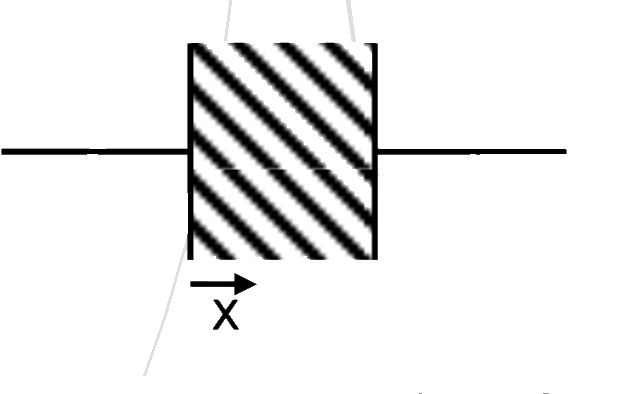The strength of a dielectric is defined as the maximum electric intensity which it can withstand. A paralel-plate capacitor of plate area on one side is filled with a dielectric of strength and permittivity . The maximum charge which can be given to the capacitor is
The correct Answer is:A
Topper's Solved these Questions
Similar Questions
A parallel plate capacitor, with plate area A and plate separation d, is filled with a dielectric slabe as shown. What is the capacitance of the arrangement ?
View SolutionA parallel plate capacitor is filled with a uniform dielectric , maximum charge that can be given to it does not depends upon
View Solution
Knowledge Check
A parallel plate capacitor has a plate separation of 2mm and use a dielectric (whose dielecric strength is 200kV/cm) as an insulator. The maximum potential difference that can be applied to the terminals of the capacitor is
A10kVB20kVC30kVD40kVA parallel plate capacitor of area ‘A’ plate separation ‘d’ is filled with two dielectrics as shown. What is the capacitance of the arrangement ?
 A3Kε0A4dB4Kε0A3dC(K+1)ε0A2dDK(K+3)ε0A2(K+1)d
A3Kε0A4dB4Kε0A3dC(K+1)ε0A2dDK(K+3)ε0A2(K+1)dA parallel plate capacitor is filled with a uniform dielectric , maximum charge that can be given to it does not depends upon
ADielectric constant of the dielectricBDielectric strenth of the dielectricCSeparation between the platesDArea of the plates
In a spherical capacitor of inner radius a and outer radius 2a dielectric strength of medium is E0 .The maximum potential to which capacitor can be charged is
View SolutionA parallel plate capacitor with plate area A & plate separation d is filled with a dielectric material of dielectric constant given byK=K0(1+αx).. Calculate capacitance of system: (given αd<<1).

View SolutionA parallel plate capacitor with plate area A & plate separation d is filled with a dielectric material of dielectric constant given byK=K0(1+αx).. Calculate capacitance of system: (given αd<<1).

View SolutionA parallel plate capacitor with plate area A & plate separation d is filled with a dielectric material of dielectric constant given byK=K0(1+αx).. Calculate capacitance of system: (given αd<<1).

View SolutionA dielectric slab fills the space between the plates of a parallel-plate capacitor. The magnitude of the bound charge on the slab is 75%ofthemagnitudeoftheeechar≥ontheplates.The∩acitanceis480mufandthemaxiμmchar≥tˆcanbes→redonthe∩aci→ris240varepsilon_(0)L^(2) E_(max)whereE_(max) is the breakdown field.
View Solution
